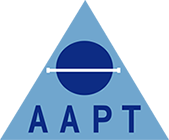News
AAPT South East Regional Event – Eastbourne
A History of Beachy Head
The presentation was delivered by Dr John Surtees. At first being that I’m not much of a history person. I honestly thought that it would be boring and wondered how it could relate to the work of an anatomical pathology technologist like me…Well I was totally wrong! Dr Surtees delivered the presentation with such character and made it fun to listen to. His introduction was to give you a glance at Beachy Head history.
Beach Head is a chalk headland in the south of England very near to Eastbourne. It has the highest chalk sea cliff in the UK, rising to 531ft above sea level. Most definitely for this reason it is a very well-known suicide spot. Beachy Head has its own patrol teams which are there to try and prevent suicides from taking place. Between 1965 and 1979
Dr Surtees gave us an insight of how the lighthouse, known as Belle Tout came about and also including many images a look at Beachy Head during the war.
A Coroners Insight to Beachy Head
Karen Brown, an Eastbourne coroner’s officer gave a talk on the coroner’s perspective of being called out to Beachy Head due to a death. What I didn’t know was that the coroners officers in Eastbourne have to be specifically trained to attend the Beachy Head site as they may have to abseil down the cliff!
Due to the type of deaths that occur there i.e. Suicide, accidental death (falling), fatal collisions leading to cars falling over the cliffs and even murder the bodies can be very much disrupted and the officers usually have to go about identifying the bodies in various ways. For instance dental identification, fingerprint, visual and also blood grouping.
It is known that more deaths occur there during the summer period. So what’s usually a quiet time in the APT world is a busier period for the APT’s in Eastbourne! It is believed that there is an increase in that season possibly just due to the fact that they have more visitors at that time.
Beachy Head is quite famous for deaths, especially suicides.
Dr John Bodkin Adams…Murder??...did he??...or didn’t he??
Dr Surtees came back to entertain us after our interval with an interesting talk on Dr John Bodkin Adams, who to me sounded like the original ‘Harold Shipman’.
John Bodkin Adams (21 January 1899 – 4 July 1983) was an Irish-born British general practitioner, convicted fraudster and suspected serial killer. Between the years 1946-1956, more than 160 of his patients died under suspicious circumstances. Of these, 132 left him money or items in their will. He was tried and acquitted for the murder of one patient in 1957.
Another count of murder was withdrawn by the prosecution in what was later described as "an abuse of process" by the presiding judge Patrick Devlin, causing questions to be asked in Parliament about the prosecution's handling of events. The trial featured in headlines around the world and was described at the time as "one of the greatest murder trials of all time" and "murder trial of the century". It was also described at the time as "unique" because, in the words of the judge, "the act of murder" had "to be proved by expert evidence."
The trial had several important legal ramifications. It established the doctrine of double effect, whereby a doctor giving treatment with the aim of relieving pain may, as an unintentional result, shorten life. Secondly, due to the publicity surrounding Adams's committal hearing, the law was changed to allow defendants to ask for such hearings to be held in private. Finally, though a defendant had never been required to give evidence in his own defence, the judge underlined in his summing-up that no prejudice should be attached by the jury to Adams not doing so.
Adams was found guilty in a subsequent trial of 13 offences of prescription fraud, lying on cremation forms, obstructing a police search and failing to keep a dangerous drugs register. He was removed from the Medical Register in 1957 and reinstated in 1961 after two failed applications. Scotland Yard's files on the case were initially closed to the public for 75 years, until 2033. Special permission was granted in 2003 to reopen the files.
Being the new south east regional lead. I thought it was only right that I did the summary for this event. Also so I can introduce myself.
Overall it was a very interesting evening. Eastbourne is a nice townand it would be great to hold another SE Regional event there in the summer of 2015. Maybe that could be our summer hotspot…watch this space!
Lakiesha Ward MAAPT
South East Regional Lead
